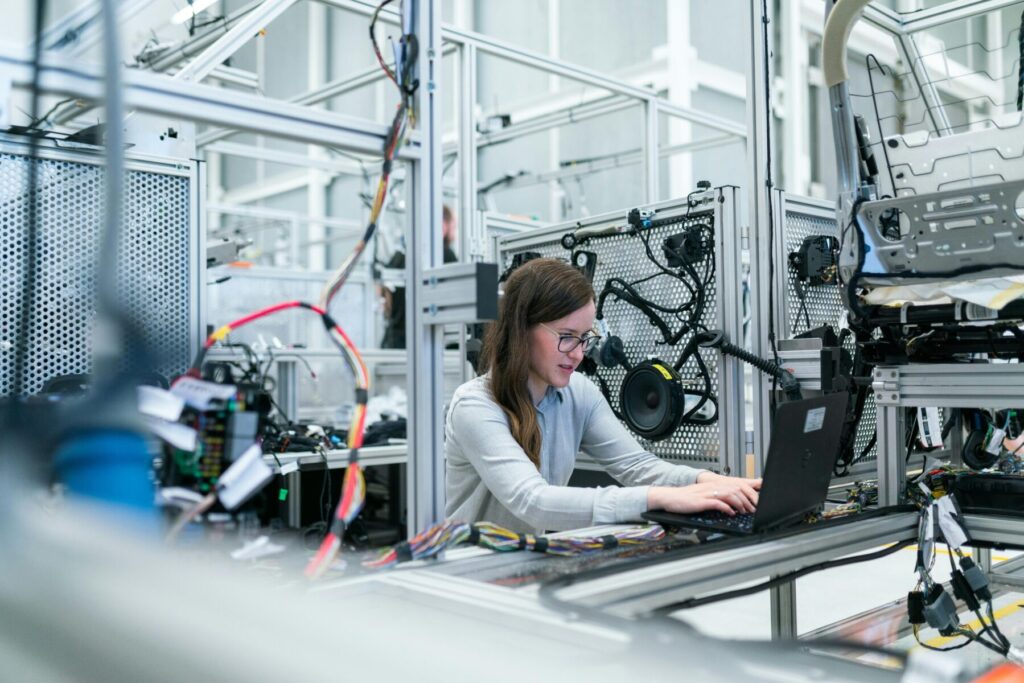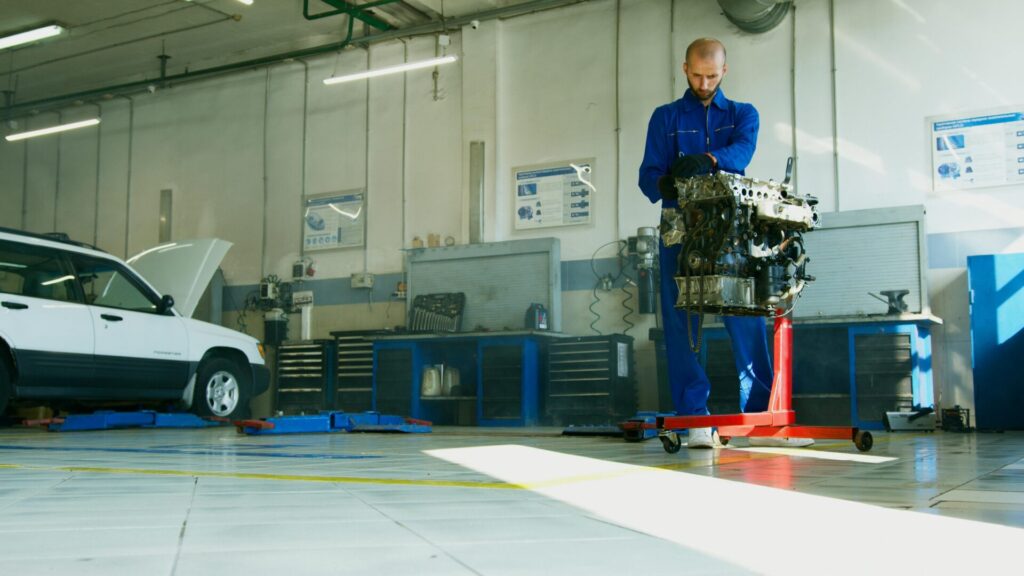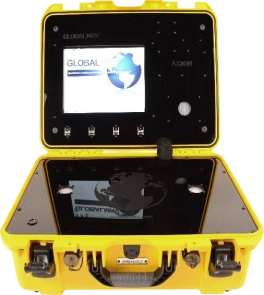
Businesses and industrial specialists: you may have come across an acronym, FTIR, in your work on the job. “What is FTIR?” you might be wondering.
GlobalMRV here: knowing the basics of FTIR is key for data analysis — particularly renewable energy audits and energy efficiency audits. If you’re in the manufacturing or product development sector, you’ll want to learn about Fourier Transform Infrared Spectroscopy (FTIR) analysis.
In this article, we’ll do just that. We’ll cover topics that fall under the 5 W’s and 1 H, such as:
- What FTIR analysis is?
- How FTIR analysis works
- Why use FTIR analysis?
- When you should use it
- Where you should use FTIR analysis
Grab your favorite beverage and note-taking device. Let’s take a quick guided tour of the basics of FTIR spectroscopy analysis.
A broad overview of FTIR and other spectroscopy technologies

| Technology | Principle | Strengths | Limitations | Used by GlobalMRV? |
| FTIR | Measures IR absorption across a wide spectrum | Simultaneous multi-gas detection, high accuracy | More complex and expensive; sensitive to water vapor | Omitted to maintain simplicity . |
| NDIR | Measures IR absorption at specific wavelengths | Cost-effective, robust, good for CO₂, CO, CH₄ | Limited to fewer gases, less selective | ✅ Yes |
| TDLAS (Tunable Diode Laser Absorption Spectroscopy) | Uses a laser tuned to a specific gas absorption line | Extremely sensitive (ppb), fast response, low interference | Gas-specific | ✅ Yes |
| UVRAS (Ultraviolet Resonance Absorption Spectroscopy) | Uses UV light to detect specific gases | Helpful for NOx, SO₂, and aromatic compounds | Limited to UV-absorbing gases | ✅ Yes |
| Corona Discharge (for PN/PM) | Electrically charges particles for counting | Effective for Particulate Number (PN) and Mass (PM) | Doesn’t identify chemical composition | ✅ Yes |
What is FTIR analysis, exactly?

FTIR analysis is the use of Fourier-transform infrared spectroscopy to observe and identify organic and inorganic materials in solid, liquid, and gaseous forms.
When we say “Fourier-transform,” we’re referring to the fact that a mathematical process called a Fourier transform is needed to convert data that are collected via an analysis. The data collected provides valuable insights into the identifying information of the sample substance being analyzed.
For example, at GlobalMRV, we’ll use analyses similar to FTIR as part of our portable emissions measurement systems (PEMS). All IR systems are based off the same things… InfraRed…passing a light through a sample to see what is there. These analyses help us identify which type of substances — CO, CO₂, NO, HC, O₂, PM, or NH₃ — are found in gaseous vehicle emissions samples.
After receiving the analyses using our PEMS, the information gleaned from these samples can be used to support manufacturer’s and business’ research and development needs.
Businesses and original equipment manufacturers (OEMs) can then use the information from FTIR analyses (and similar analysis technology) to create greener, cleaner products for their and their clients’ needs.
Let’s take a look at FTIR analyses to give us a better understanding of what it entails.
How does FTIR analysis work (part 1 of 2)?

Absorption spectroscopy techniques like IR spectroscopy work by directing beams containing different wavelengths of light — beams like X-rays, ultraviolet (UV) rays, or IR light — onto a sample. Then, the researcher measures how much of the light the sample absorbed at each wavelength. This is the “IR” in FTIR or NDIR, or the “UV” in UVRAS.
The FTIR instrument sends infrared radiation that’s 10,000 centimeters (cm) to 0.01 cm in size through a sample. The resulting absorbed radiation is converted into rotational and/or vibrational energy.
The result is a signal at the detector. The signal represents a molecular fingerprint of the sample. Each different molecule or chemical structure includes its own unique spectral fingerprint, making FTIR analysis a tool for identifying different chemicals in a liquid, solid, or gaseous sample.
Often, absorption spectroscopy is completed via “dispersive spectroscopy” technology, where a single wavelength of light radiation and a beam of light is shined through a sample, and each individual wavelength is measured.
FTIR analysis (part 2 of 2)?

FTIR analysis differs from this technique in that the technology shines a broad band (containing a full spectrum of the wavelengths to be measured) through a specific device called an interferometer.
The interferometer consists of a configuration of rotating mirrors. Each mirror blocks different types of light wavelengths, as the mirrors interrupt the beam of light in different combinations of wavelengths.
A motor rotates these mirrors at rapid speeds, altering the types and combinations of wavelengths that contact the sample. The interferometer produces a great deal of raw data on how much light the substance absorbs at each mirror position.
Finally, a computer converts the data from the substance’s light absorption at each mirror position into the substance’s absorption of each wavelength of light.
The process of the conversion helps map the light absorption as it passes through the sample. The result of the process is a graph that includes information about frequencies and wavelengths.
By checking this graph against reference materials, analysts can identify the composition of the sample and make actionable decisions for their business and industrial needs.
Speaking of samples, let’s take a look at why FTIR might be important in contexts related to business and industrial processes.
Why use FTIR analysis?

FTIR analysis is key for helping reveal the composition and make-up of various compounds in microscopic detail. FTIR analysis is one of the most commonly applied testing procedures for a variety of applications. Some of those applications include:
- Conducting quality test controls
- Analyzing contaminants
- Conducting why products fail, also known as failure analyses
At the same time, FTIR tends to be more expensive than traditional spectroscopy techniques, is often confined to laboratory-only testing environments, and takes more time than traditional absorption spectroscopy technologies. Mobile systems are much more difficult to maintain, staff, and calibrate.
With that being said, let’s take a look at what FTIR can do in greater detail.
Analyzing contaminants and quality-testing substances
FTIR analysis’ ability to identify all of the extant substances within a sample at the same time makes FTIR a valuable tool for quality control testing. For example, you can find and identify many surface contaminants on manufactured products.
FTIR can help conduct a quantitative analysis of materials, such as electronics, plastics, metals, medications, and more. What’s more, FTIR analysis is helpful for quality control testing because it helps test personnel identify that contaminants exist. Also, FTIR can help identify which particular contaminants exist within a larger sample of contaminants.
The pinpointing of various contaminants helps manufacturers in a variety of industries to track where in the production process a product becomes compromised. Then, researchers can take action to resolve the issue.
For example, we integrate various IR and UV technologies to create a hybrid process that costs less, produces results faster, and is more convenient for use. It’s all possible with our internal combustion engine vehicle (ICEV) engine developers and researchers.
Our integrated portable emissions measurement systems (PEMS) are designed to be both robust and cost-effective. By combining multiple sensing technologies into a hybrid platform, we enable users to capture significantly more data without the high costs or engineering complexity of traditional systems.
This flexible, modular approach not only simplifies deployment and use, but also empower OEMS and researchers to pinpoint where emissions are most concentrated, thereby helping reduce greenhouse gas output and bringing engines into compliance.
As a result, many of our product engineers who use our PEMS devices help discover unknown gaseous spikes, spikes that could compromise the integrity, functionality, and sustainability of their devices.
In other words, FTIR, NDIR, UVRAS, TDLAS, and other spectroscopy technologies can be very useful for a range of applications and sustainable solutions.
To analyze for product or substance failures
Speaking of contaminants, FTIR spectrum technologies can help with more than sample preparation. FTIR can help identify why a product fails to perform to expectations.
After a sample material analysis using FTIR spectrometer analytical techniques, with qualitative and quantitative information at the ready, we can deduce the reason for a product’s failure and solutions to resolve it.
In summary, FTIR can help prepare samples, identify contaminants, and deduce to what extent those products are failing because of said contaminants.
When should you use FTIR analysis?

FTIR is often used in the following scenarios:
- To identify unknown materials in solid, liquid, or, less often, in gaseous forms
- To understand the total composition of different substances in a complex compound
- To identify and quantify surface contaminants that might exist in a material
- To test the quality, strength, and weaknesses of products and substances
- To determine what’s occurring at the molecular level of various materials
The above-mentioned list encompasses most of the ways that FTIR, as well as other IR and UV spectroscopy technologies, can be used.
Where and how can I get FTIR analysis?

Thinking about purchasing or renting a device that conducts FTIR analyses? Good news.
A huge market exists for Fourier-transform infrared spectroscopy-based, lab based products. The global market for FTIR fuel analyzers is projected to grow from $1.2 billion to $2.8 billion over the next eight years, according to a DataIntelo.com report.
So, finding an organization that provides FTIR analysis won’t be especially difficult. But, the cost may alarm you, with the most cost effective portable technologies starting at $150,000+.
Alternative, integrated hybrid portable emissions measurement systems (PEMS) use similar infrared light scattering techniques that FTIR uses — these PEMS deliver greater volumes of data at a fraction of the cost, with greater efficiency, and with an intuitive, easy-to-use user interface.
Our rPh.D. researchers, managers, analysts, engineers, and technicians have run more than 60 different types of diagnostic testing regimes. We’ve also supported hundreds of different vehicles and engines for overall emissions reduction and fuel calibration testing using cost-effective and user-friendly technologies.
If you’re curious about conducting sample analyses for emissions testing purposes using products that are cost-effective, efficient, and easy to use, don’t hesitate to contact us. We’ll provide you a zero-risk, complimentary trial of our PEMS devices.
GlobalMRV: Pushing the boundaries on what’s possible every day

GlobalMRV is invested in similar technologies to FTIR for their application in air quality monitoring, specifically for vehicle emissions testing. We’re here to push the boundaries of and improve processes related to real driving emission testing.
We focus on real-time, rugged, and field-deployable systems. Our use of NDIR, TDLAS, UVRAS, and corona discharge allows us to cover a wide range of pollutants with high precision and reliability.
What’s more our systems can be used in mobile and regulatory testing environments. Our hybrid, easy-to-use PEMS give you all the details and control that you need to make informed decisions, all at a fraction of the cost.
In other words, FTIR is a good alternative if your company has a sizable budget to spend on air quality monitoring. FTIR may also help should you have a great deal of expendable cash to use on air quality testing.
But, if you’re looking to make that same measurement for a fraction of the cost, consider our integrated, hybrid, and customizable PEMS.
Using our real-time, rugged, and field-deployable systems, we can provide cost-effective solutions to FTIR that deliver the same great results as FTIR, with greater expediency, and using easy-to-navigate technology.
Curious to see what our technology looks like in action? Here’s a short video of what PEMS testing looks like using GlobalMRV IR and UV technology in upstate New York’s rugged mountains.
If you’re looking to partner with us in creating a greener, cleaner tomorrow — or if you’d like to test out our PEMS or sample conditioning equipment — don’t hesitate to reach out to us anytime.